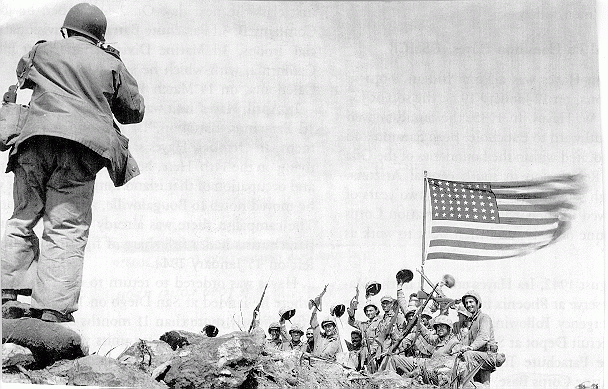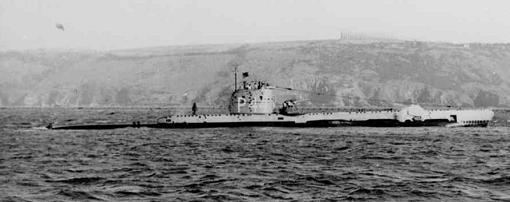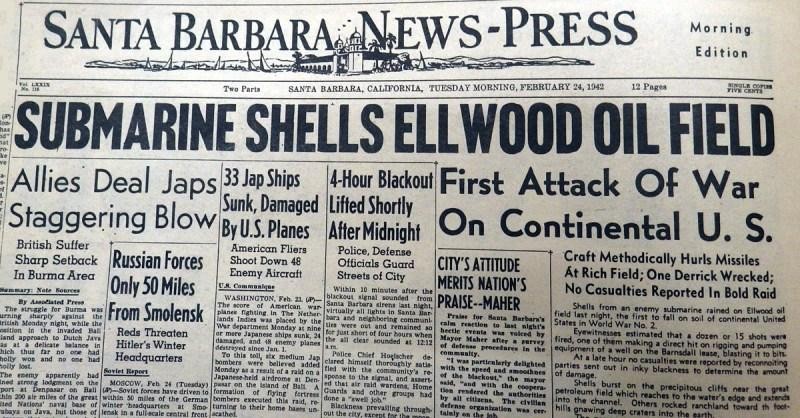On This Day...23rd February
I was minded to post just this one image today with no narrative. Joe Rosenthal’s iconic and Pulitzer Prize winning image has few peers. Far from being staged (it wasn’t), Rosenthal almost missed the moment and was not even looking through the camera’s viewfinder when he shot it.
The original flag (famously it was actually the second flag planted atop Mount Suribachi) in the National museum of the Marine Corps, Virginia, US. The flag was taken from a Salvage Depot in Pearl Harbour after the attack in December ‘41.
Hellishly, the image hides a coldly representative statistic of Iwo Jima; of the men who rose the flag, Michael Strank, Harlon Block, and Franklin Sousley later died fighting on the island.
British submarine HMS P-38 was sunk today in 1942.
Below is the Italian Captain’s log entry of the attack...
“SECRET COMMAND AFFAIR!”
“REPORT ABOUT THE SINKING OF AN ENEMY SUBMARINE BY TORPEDO BOAT “CIRCE” ON 23.2.42 – ACCORDING TO STATEMENT BY COMMANDER K.KPT.PALMAS”
“CIRCE escorted a convoy of 3 steamers on the way to Tripolis. Calm sea. Light swell. Speed 14 knots.”
“Northwest of Cape Misurate an echo was reported at 1014 [hours] in 46 degrees, 1,800 metres. Bearing wanders out quickly. Signal to convoy to turn to port.”
“Boat [CIRCE] turns into the bearing, increases speed to 18 – 20 knots and moves across the target. At around 1,000m the periscope is sighted at the position of the echo. With 16 knots moved onto it and dropped six depth charges from rails and four from throwers into the location of the dive which was indicated by air bubbles. Depth setting 70 metres.”
“Shortly after the submarine surfaces with heavy list to stern, it had apparently used pressurised air [emergency surfacing]. Other boats [escorts] and planes open fire and throw depth charges, in some cases in front of other boats. One Italian rating is killed by friendly machine-gun fire. This makes an orderly attack by CIRCE impossible. After the other boats have been called off, CIRCE again receives an echo from the by now again submerged submarine. This resurfaces shortly after like a dolphin with running screws and drops 45 degrees listing to prow into the depth. A lot of oil and air bubbles come up, which only slowly reduce. Apart from that parts of the interior fittings (polished cupboard door, table top), one bag with flags and body parts (lung) drift up.”
“Boat remains 1.5 hours on the scene of the attack. Echo shows the same location until the last. Water depth 350m. The echo is probably caused by the continuing rising of oil and the still escaping air.”
“Before I finally move off, I cross the site of the sinking at slow speed and and offer the fallen honourable recognition with the whole crew on combat stations.”
The CIRCE was lost after a collision with the Italian boat ‘CITA di TUNISk at Castellammare on the 27th November 1942.
Today, February 23, 1836, approximately 1,500 Mexicans marched into San Antonio de Béxar as the first step in a campaign to retake Texas, starting the Battle of the Alamo.
At 7 PM on February 23rd 1942, Santa Barbara residents were tuning in to listen to President Franklin Roosevelt’s ‘Fireside Chat’ on the radio. Pearl Harbor was only two and a half months earlier and tensions were tangible for those living on the west coast.
Japanese submarine I-17 captained by Kosovo Nishino surfaced in a rough swell and began bombarding Richfield oil refinery with its one 14cm Naval gun (below).
Total damage from the attack was assessed at $500.
While the attack caused only minor actual damage, it had a significant impact on the public and hundreds of residents left the coast fearing iminent invasion.
Two days after the raid, a broadcast from Radio Tokyo announced, “Santa Barbara, California was devastated by enemy bombardment”.
Records of the Japanese Imperial Navy stated that they, “left Santa Barbara in flames”.
Above is a Japanese postcard ‘commemorating’ the I-17 shelling of the Ellwood refinery.
The incident prompted that rarest of things, a Steven Spielberg ‘turkey’
The photo above captures a Japanese torpedo bomber as it aims for the USS Belleau Wood (CVL-24) - aircraft can be seen flying in at deck height to the right of the Carrier.
The Belleau Wood was taking part in lightning raids on the Marianas, 23rd February 1944 as part of Task Group 58.2. Below, the aircraft is seen as it explodes on impact as it crashes into the sea. Photo taken from the deck of the USS Essex.




















Another great set of On This Day photos. Very much 'liked'. Well done David.
Thanks, Julian. Very much appreciated.
It absolutely was not staged , the proof is recorded on film shot by a Marine cameraman, who was next to Rosenthal when he took the still photo.